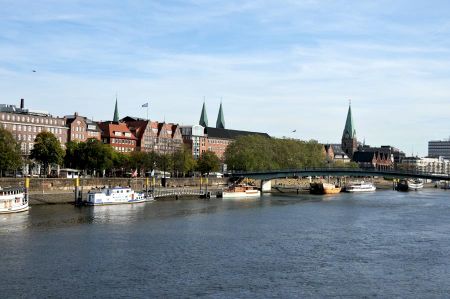Harbour tour on the Weser in Bremen
- Written by Portal Editor
There was a problem loading image 'images/reisefuehrer/bremen-hafen-9.jpg'
There was a problem loading image 'images/reisefuehrer/bremen-hafen-9.jpg'
There was a problem loading image 'images/reisefuehrer/bremen-hafen-7.jpg'
There was a problem loading image 'images/reisefuehrer/bremen-hafen-7.jpg'
There was a problem loading image 'images/reisefuehrer/bremen-hafen-4.jpg'
There was a problem loading image 'images/reisefuehrer/bremen-hafen-4.jpg'
There was a problem loading image 'images/reisefuehrer/bremen-hafen-3.jpg'
There was a problem loading image 'images/reisefuehrer/bremen-hafen-3.jpg'
There was a problem loading image 'images/reisefuehrer/bremen-hafen-2.jpg'
There was a problem loading image 'images/reisefuehrer/bremen-hafen-2.jpg'
There was a problem loading image 'images/reisefuehrer/bremen-hafen-5.jpg'
There was a problem loading image 'images/reisefuehrer/bremen-hafen-5.jpg'
There was a problem loading image 'images/reisefuehrer/bremen-hafen-1.jpg'
There was a problem loading image 'images/reisefuehrer/bremen-hafen-1.jpg'
After the interesting lectures by the mayor of the city of Bremen and the consul of the Republic of Turkey on the occasion of Turkey's 90th birthday in the historic hall of the Bremen town hall the evening before, we wanted to take advantage of the wonderful autumn weather to go on a harbour tour with our hostess Laura.
With a quick search on the internet, we quickly found out the departure time and location. A special feature worth mentioning also resulted from the so-called voucher books, which are handed out to "new citizens" of Bremen when they register, in order to make it easier to get to know the city. In addition to vouchers for fresh bread from a bakery, free copies from a printer and many others, it also included a voucher for a harbour tour. A great campaign that makes it easier to find your way around the city quickly and to get to know the streets and squares. Very worthy of imitation.
Wonderful view of the historic ships moored along the battlements

We passed the well-known Pannekoekschip "Admiral Nelson", the Weserburg, which today houses the Museum of Modern Art, drove under the Stephanie Bridge, then along the Downtown Terraces and finally reached the commercial ports, including the well-known timber port where the import timber was loaded be landed by rail or truck or for further processing in local companies.
A little later we enter the Neustädterhafen and receive a little "lesson" on the subject of sea rescue from the ships in the harbour, here in particular about the free-fall lifeboats that we can see on board the huge freighters. Of course we don't need to explain at this point what function a lifeboat has on a ship in the event of danger, but the explanations regarding modern free-fall lifeboats were quite interesting, especially since some history was also included in the explanations.
English captain Frederick Marryat developed the first lifeboat
Last but not least, the world-famous film about the Titanic sinking has also contributed to the intensive attention to rescue technology on ships. Again and again, we hear about casualties in the news because the lifeboats were not properly served, panic led to casualties during the rescue, or the boats were simply not seaworthy enough to withstand high waves before being rescued by other ships. Only the development of so-called free-fall lifeboats has visibly contributed to the improvement in distress at sea, but primarily in the cargo ship sector.
Development of so-called free-fall lifeboats has visibly contributed to the improvement in distress at sea
Free fall lifeboats are totally enclosed as they submerge for a short time upon hitting the water. A door at the rear serves as entry. The crew members sit opposite to the direction of travel. Since the boats hit the water from a great height (up to 40 meters) and with great force, all occupants must buckle up and also press their heads against the backrest to avoid injuries. Often the seats among the crew members are fixed. This should allow for faster boarding.
The trigger mechanism is internal and operated by the boat's operator. A hydraulic bolt is actuated with a lever, which lifts the free-fall boat so that it falls unhindered into the water. After that, the boat can be maneuvered out of the dangerous situation with its own engine. It is equipped with the items required by the international ship safety treaty for locomotion, for attracting attention as well as for the protection and survival of the occupants. Tankers also have free-fall lifeboats equipped with a mechanism that creates a fine spray around the boat to avoid catching fire in the event of an oil-on-water fire.
The closed lifeboats had their origin in an idea and close observation of the inventor Ernst Nicol. The first closed lifeboats on German seagoing vessels were installed on the two bulk freighters Praunheim and Berkersheim of the Unterweser shipping company in 1957, since then the development of free-fall lifeboats has progressed rapidly.
Behavior in an emergency and a protective cover for open boats
Visit to the DGzRS (German Society for the Rescue of Shipwrecked Persons) in Bremen
Since the first SOLAS agreement as a result of the sinking of the Titanic, rules and recommendations for the number, size and equipment of lifeboats on board seagoing merchant shipping have been drawn up, but these are often not complied with.
Please read as well:
Bremen's Schnoor district and famous Böttcher Street
Bremen's Schnoor district and famous Böttcher Street
The Schnoor - Bremen's most famous visitor magnet
https://www.alaturka.info/en/germany/hanseatic-bremen/6024-harbour-tour-on-the-weser-in-bremen/amp#sigProId381c06ed39
